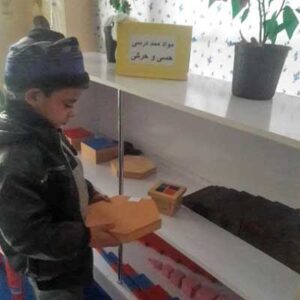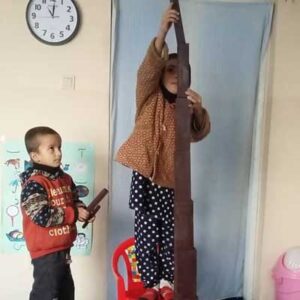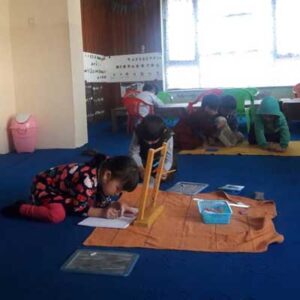Montessori in Afghanistan
Why Montessori?
 Maria Montessori established her first school for pre-school children from poor working-class families in Rome. Her radical ideas showed how to provide an environment that would feed a child’s heart, mind, soul, and body. In a learning environment based on freedom, choice, respect, and inspiration, the children that society had often ignored began to blossom. The results were astounding, emotionally and psychologically, as well as cognitively.
Maria Montessori established her first school for pre-school children from poor working-class families in Rome. Her radical ideas showed how to provide an environment that would feed a child’s heart, mind, soul, and body. In a learning environment based on freedom, choice, respect, and inspiration, the children that society had often ignored began to blossom. The results were astounding, emotionally and psychologically, as well as cognitively.
This is why we brought Montessori education to Afghanistan. Children need freedom and space to be, and when given that chance, alongside an education style that nourishes rather than restricts, their natural energy and growth will take them to wonderful places of joy, balance, confidence and learning.
This is exactly what these children need. Many of the children at the Garden of Flowers have lost a parent. They live in destitute environments with families which have been through their own individual struggles or traumas, deeply impacting their small children. But over the 18 years of the House of Flowers Montessori Orphanage, we learned that one of the most powerful benefits of the free and supportive environment is that children gained confidence in themselves. The Montessori approach brings the natural joy and resilience of children to the surface, and they learn and grow in ways that adults think would never be possible.
Now at the new Garden of Flowers Preschool, over and over we are hearing from the parents of the children that their children are calmer, more attentive, more helpful. And since almost all of these parents are illiterate, they are also thrilled to see that their children are already on their way to becoming literate. They’re also shocked that the children love it, love learning and love school.
As one mom said to the teachers, “What magic are you doing in that school? You are angels…”
The Garden of Flowers offers a smooth and reliable routine for the children, from their arrival around 8:00 to leaving at 3:30. Within the routine is a warm sense of freedom. The room is a buzzing space of chatter, of the children working together in their small community. This is why the children run to school.
The children begin arriving around 8:00 (although some come earlier!). After being greeted by Fatima and Razia at the gate with a cheerful hug and ‘Good morning!’ all prepare for the day together – washing face and hands, brushing teeth, and brushing hair, and some might take a warm bath.
Their work cycle begins in their Montessori classroom with shelves full of Montessori materials. The younger ones often choose “Practical Life” work. They might dust the leaves of the classroom plants, or string beads on a long string, or practice cutting paper with scissors, or many other choices.
Older ones may do more language and math work, but they also enjoy helping the younger children.
 All the children are free to choose. It is joyful and lively with a wide variety of activities happening around the room as the children make their choices of what they wish to do. The teachers give lessons to the children either individually and in small groups. They also sit and observe the classroom in order to keep track of what the children are doing and are ready for.
All the children are free to choose. It is joyful and lively with a wide variety of activities happening around the room as the children make their choices of what they wish to do. The teachers give lessons to the children either individually and in small groups. They also sit and observe the classroom in order to keep track of what the children are doing and are ready for.
At 10:30 the class gathers for a mid-morning snack of tea and biscuits..
At 12:00, the children clean the classroom and assist with setting up the meal cloth on the floor for the meal. Lunch is a healthy meal of rice and vegetables or meat, yogurt, and fruit. The children all help clean up after the meal, sponging off the tablecloth and sweeping the floor.
After lunch the children play outside (or inside, if the weather is bad.) Some of the younger ones may head to the quiet room where they can settle in under warm quilts and take a nap, but most prefer to keep working in the classroom with their friends. They meet in a group circle to talk, share, tell stories.
They have an afternoon snack of rice pudding or soup, and then around 3:30, the children leave for home.

